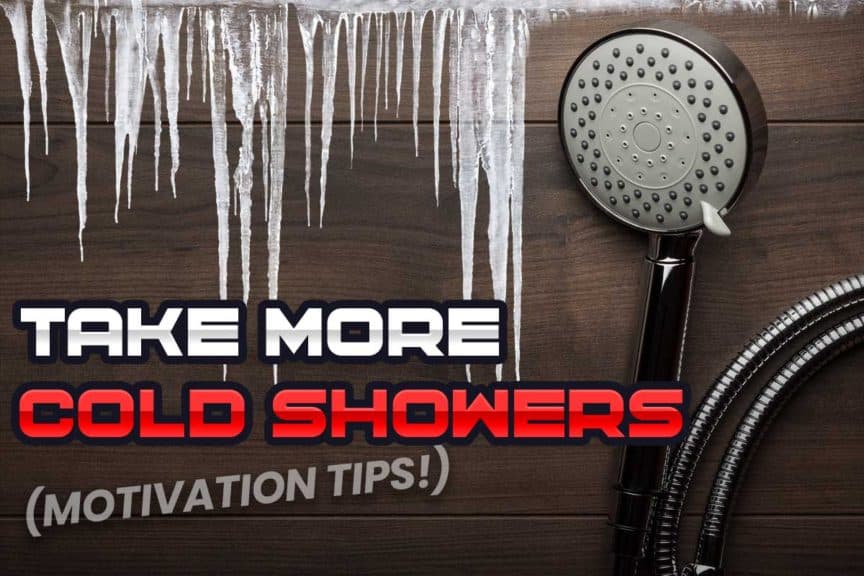“Constant comfort kills” is one of the quotes I try to remind myself of whenever I find myself lacking the motivation to endure something that I know will be uncomfortable yet very beneficial to go through. Getting ready to hop into a cold shower is perhaps the pinnacle example of such situations for which I recite this quote to myself.
You can increase your motivation for doing cold showers by knowing their benefits, using the hot-to-cold strategy, determining the optimal cold temperature with a breath control technique, and using “cheat” showers. These will all help to greatly increase your motivation to hop in a cold shower.
Cold showers can be very uncomfortable — physically and mentally — but doing the uncomfortable things in life are often the prerequisite to an overall healthier mind and body.
As such, there’s emerging scientific evidence to support the implementation of cold showers or cryotherapy into one’s regimen for boosting one’s health, and there’s certainly no shortage of anecdotal evidence as well. So they’re certainly worth considering, if nothing else.
But hoping into a freezing cold shower on a regular basis can be much easier said than done, even for highly motivated individuals. Regardless of your motivational levels, the following tips can be game-changers for helping you embrace the cold and reap its rewards. So, if you want all the details, keep on reading!
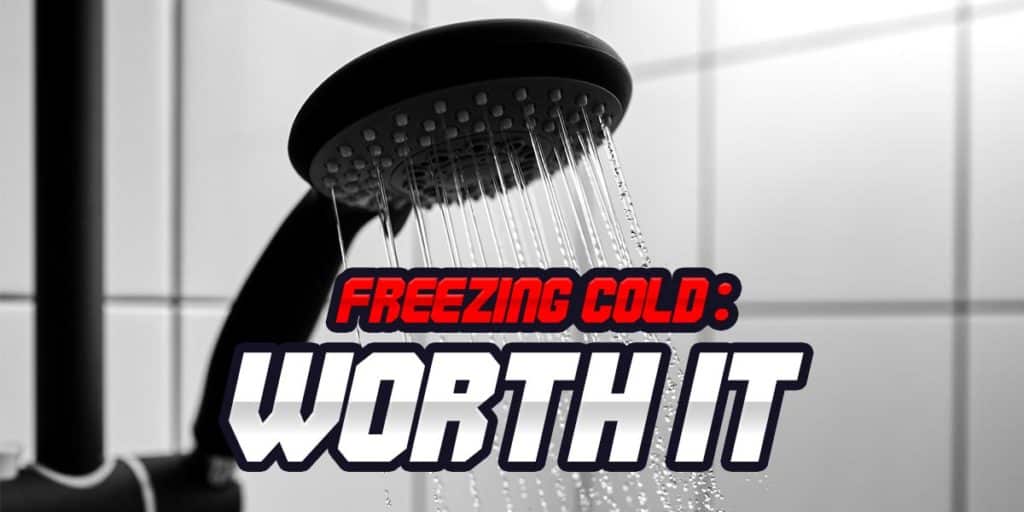
ARTICLE OVERVIEW (Quick Links)
Click/tap on any of these headlines to instantly jump to that section!
Strategy 1: Ask yourself this one question
Strategy 2: Start warm, finish cold
Strategy 3: Focus on the benefits
Strategy 4: Use this temperature strategy (breath control)
Strategy 5: Incorporate “cheat” showers
Related article: Getting Inspired to Exercise: Tap Into This Game-changing Mindset
Strategy 1: Ask yourself this one question
If you know that hopping into a cold shower is something that you should (or want to) do but keep wimping out (no judgement, it happens to us all), ask yourself this one simple question to re-frame the situation:
“Am I going to die from this?”
The answer: Of course not. And are you going to become permanently disfigured or suffer life-altering consequences from spending a couple of minutes under running cold water? Nope.
There’s something that I have found to be profoundly helpful by framing my hesitations through the lens of that simple question; it strips away all the little reasons or voices that pop up in my head that suggest why I’d better hop into a warm shower instead.
It’s likely due to the irrefutable logic that my brain is forced to acknowledge and can’t deny when I ask myself this question. Healthy individuals don’t die or suffer permanent disability by spending a bit of time in some annoyingly cold water.
So, as you stare at the cold water pouring out from your shower head and find yourself coming up with reasons to bail on your plans to hop in, ask yourself that question. Next, acknowledge the answer, and then just do it.
Related article: Motivate Yourself to Workout at Home: Pro Tips to Get Fired Up
Strategy 2: Start warm, finish cold
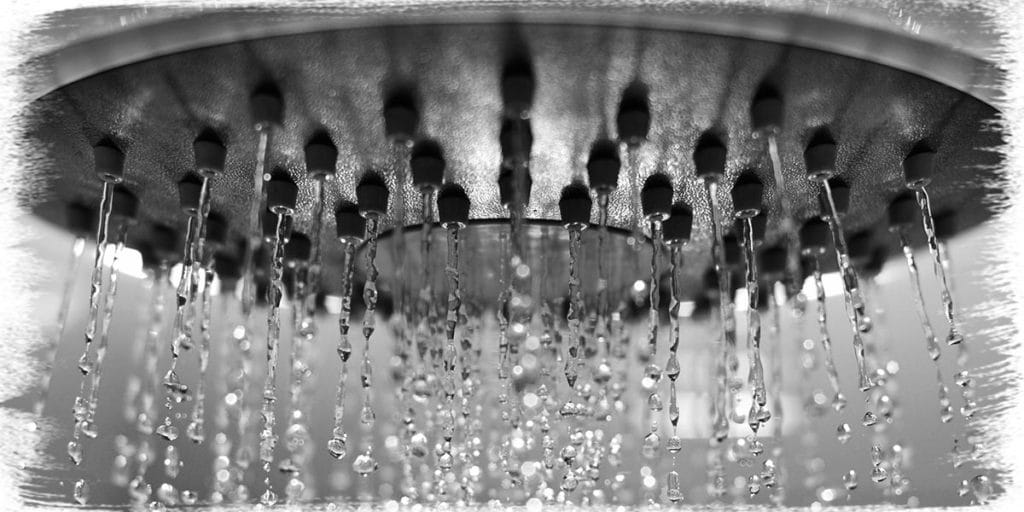
For many people, the thought of just jumping immediately into a seemingly freezing cold shower is a bit of an overwhelming one. If this happens to be you, and you find that there’s just not enough motivation in the world for you to hop into an icy-cold shower right away, you can opt for the warm-to-cold strategy.
This strategy can make cold showers much more tolerable when it comes to psyching yourself up to go through with them. All you need to do is start with your typical warm-temperature shower and then finish the last thirty seconds or couple of minutes with the shower handle cranked more towards the “cold” setting.
The benefits here are that you’re still getting your cryotherapy exposure rather than bailing entirely on the notion of spending some of your shower time in cold water.
If this is still quite overwhelming, start gradually with the amount of time you spend under the cold stream of water and increase your exposure length as time goes on. You may opt for just ten or fifteen seconds of cold exposure to start with, and then choose to slowly work up to the point where you spend half your shower time in cold water, and then even three-quarters time under cold water, then 90% of your time in cold water, etc.
Pro tip: A great way to start out with timing your exposure to the cold water is to stay underneath the suddenly cold shower stream until you’ve got your breathing back under control to the breathing pattern it was before the water temperature changed. (Sudden cold exposure will automatically change your breathing pattern.) Once your breathing is back under control, you’re all done.
The benefit of starting warm and then scaling up your exposure time in cold water is that it helps to foster a behaviour change in the process by avoiding “all or none” thinking. Something is almost always better than nothing, and helping your brain find ways to instil this behaviour into your thought process can be a game-changer for getting you to spend some time in cold water.
Strategy 3: Focus on the benefits
Whether it’s psyching yourself up to hop in a cold shower or for anything else in life that’s challenging, it can be easier to fortify your motivation when you know — and fixate — on the benefits that await.
When it comes to volitionally letting unpleasant cold water pour over you, science suggests some promising benefits to be had.
Coldwater therapy has been studied extensively for muscle and nervous system recovery, hormonal functioning and even for psychological well-being.1–5 As a result, whether you’re an athlete looking to optimize physical recovery and functioning, or you’re an average joe just looking to get some cognitive-type of benefits, it seems promising that you can offer some promising benefits to your body and mind if you’re willing to let the cold water pour over you.
And of course, if you factor in the anecdotal benefits that others claim to have found for themselves, which there’s certainly no shortage of, there’s likely even more profound positive changes that await.
So, if you know which specific benefits you want, it will likely do you some good to fixate on them, especially when you’re dreading hopping into some icy cold water. It’s basically the old “keep your eyes on the prize” mindset. And let’s face it, when you fixate your thoughts upon the benefits to be had, the unpleasantness, inconvenience or other negative aspects will fade away or seem less intense than if you were to rather only ask yourself “why am I doing this?”
Pro tip: The lower your motivation, the more it will likely benefit you to know (and dwell) on the benefits that can be had.
Strategy 4: Use this temperature strategy
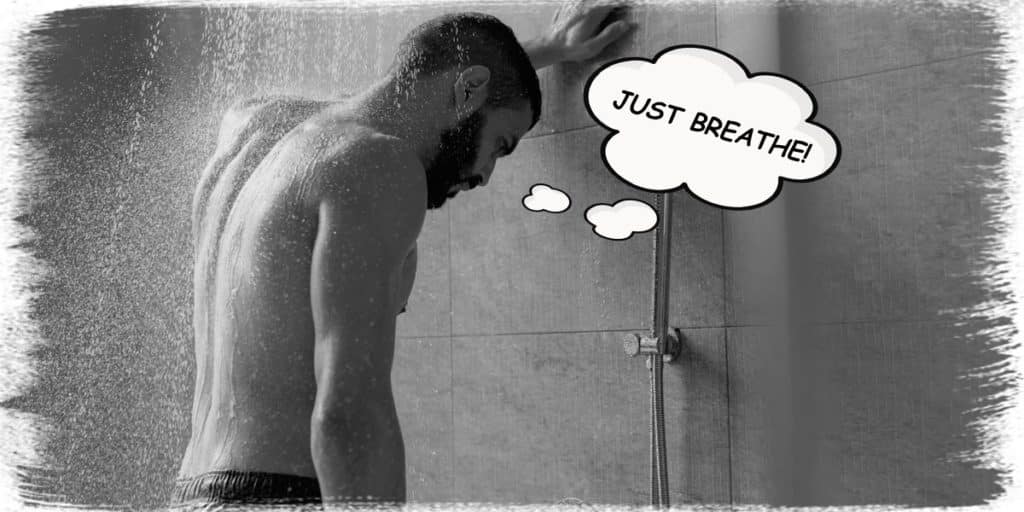
Sometimes shower water can be brutally cold — not likely cold enough to harm you, but certainly cold enough to kill your motivation for wanting to stick with a cold shower routine.
So maybe you don’t need to go “arctic glacier-like” cold, but how do you make the cold temperature slightly more tolerable (which can increase your motivation) without warming the water up so much that you defeat the purpose of taking cold showers altogether?
The solution is to find the threshold at which the water temperature breaks you out of your regular breathing pattern and to not decrease the temperature any more than that. If you’ve ever spent time being immersed in cold water, you’ll know that it has an instant effect on your ability to control your breathing; you feel like your breath is taken away from you for a couple of seconds and thereafter find your breathing heavy and rapid.
It’s still an unpleasant experience, to be clear. Still, it’s a bit less unpleasant, which can be just enough of a change to make this whole “cold shower” thing more psychologically manageable. There’s nothing wrong with dropping the shower temperature even further below this rapid-breathing threshold if you really want to, but so long as your breathing pattern changes from the cold water, it’s likely cold enough.
Strategy 5: Incorporate “cheat” showers
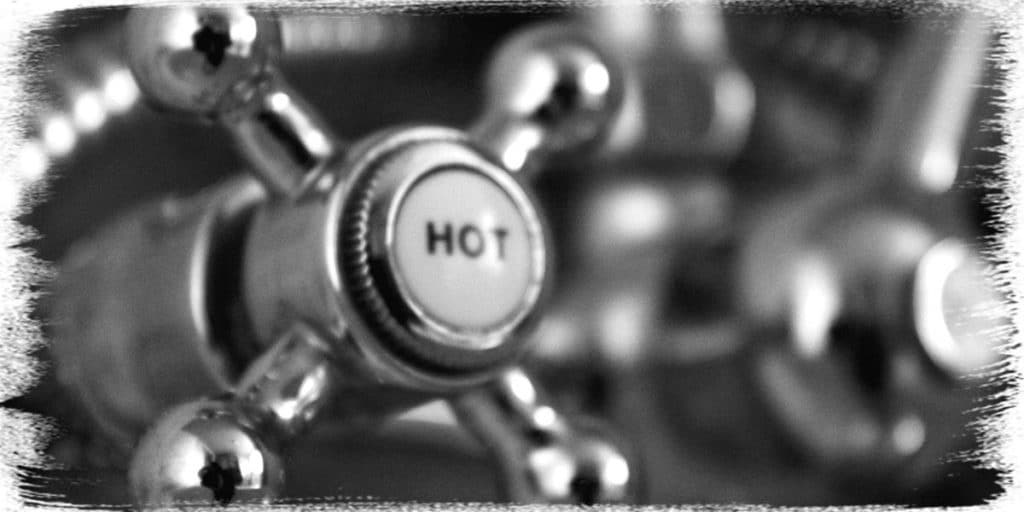
“Cheat” showers are like cheat meals. If you’re not sure what a cheat meal is, I’ll quickly explain:
When following relatively strict or even extremely strict diets, even the fittest and most dedicated individuals experience psychological and physiological stress from the prolonged demands of continually enduring mild hunger or food cravings. The psychological toll to have no deviation towards a single snack or meal can be intense and often overwhelming, to say the least.
As a result, these individuals often incorporate “cheat” meals into their dietary strategy. These meals consist of a predetermined point in time where the individual will break away from their otherwise strict or rigid eating protocol. They may have a dessert after their meal, eat an otherwise “off-limits” food or eat a slightly larger portion of food than normal (or even both). Since this one meal is few and far between, it has no negative effects on body composition, physical performance, etc.
The primary intended result is to simply take away some of the psychological or even physical effects of enduring prolonged dietary longing. Usually, after a designated cheat meal, the individual feels that they’ve “had their fix” and can continue on with the strict diet for another week, two weeks, etc.
Having a “cheat” shower to look forward to can help free you of the psychological stress that can continue to build when you otherwise only have cold showers to look forward to day after day or week after week; knowing that you have permission to take an entire shower in warm, comfortable water can be a great motivator to keep on going with your cold shower routine in the long run.
How often you choose to employ these cheat showers is up to you. I’m currently not aware of any literature that looks into what ratio of warm to cold showers you would begin to lose any benefits (if such a thing even exists). Still, I wouldn’t worry about an occasional warm shower negating any of the positive physical effects you’ve manifested from all your previous cold showers.
If you REALLY struggle with motivation, you might even want to use a 1:1 ratio, where one shower is cold (either entirely or at the end) and the next shower being one at a warm temperature. But if you don’t struggle that much, you may want to opt for a 6:1 ratio, where you only take one warm shower per week, or 13:1 every two weeks.
The point is that it can be helpful to use this strategy to make this whole “cold shower” thing less overwhelming and psychologically taxing. As a result, sticking with a cold shower routine may seem more manageable overall – and when things seem more manageable, your motivation will naturally climb.
Final thoughts
Various physical and mental benefits can arise from regularly exposing your body to cold temperatures. Cold showers are arguably the most practical way to get this sort of cold exposure on a regular basis. But psyching yourself up to hop into a cold shower rather than a warm one can take a lot of mental fortitude to do so.
Use the tips in this article to help make this process less intimidating and more manageable. As a result, you’ll find that you’ll struggle less with motivation and will therefore have an easier time hopping into a cold shower and sticking with the overall process.
References:

Hi! I’m Jim Wittstrom, PT, DPT, CSCS, Pn1.
I am a physical therapist who is passionate about all things pertaining to strength & conditioning, human movement, injury prevention and rehabilitation. I created StrengthResurgence.com in order to help others become stronger and healthier. I also love helping aspiring students and therapists fulfill their dreams of becoming successful in school and within their clinical PT practice. Thanks for checking out my site!

